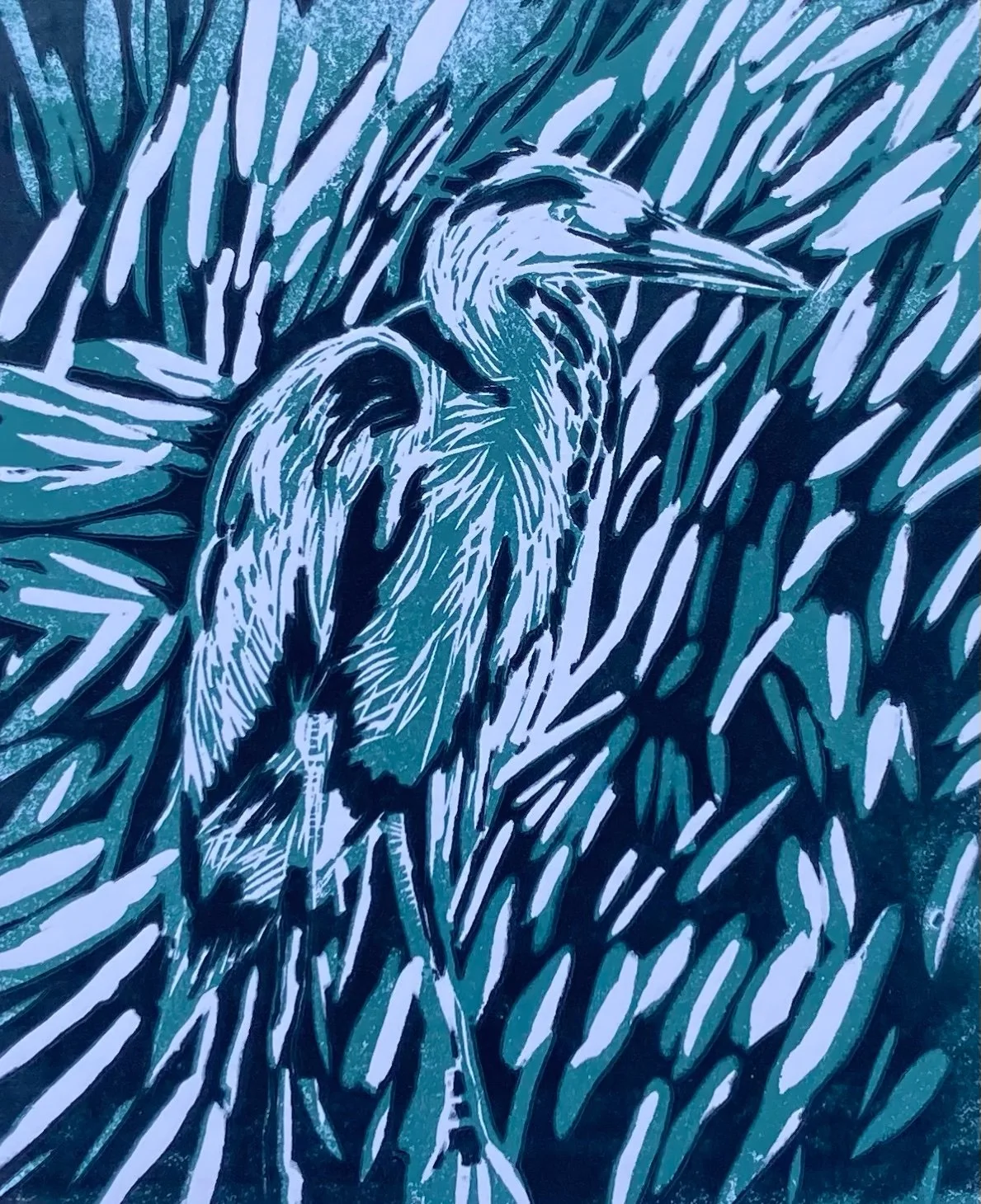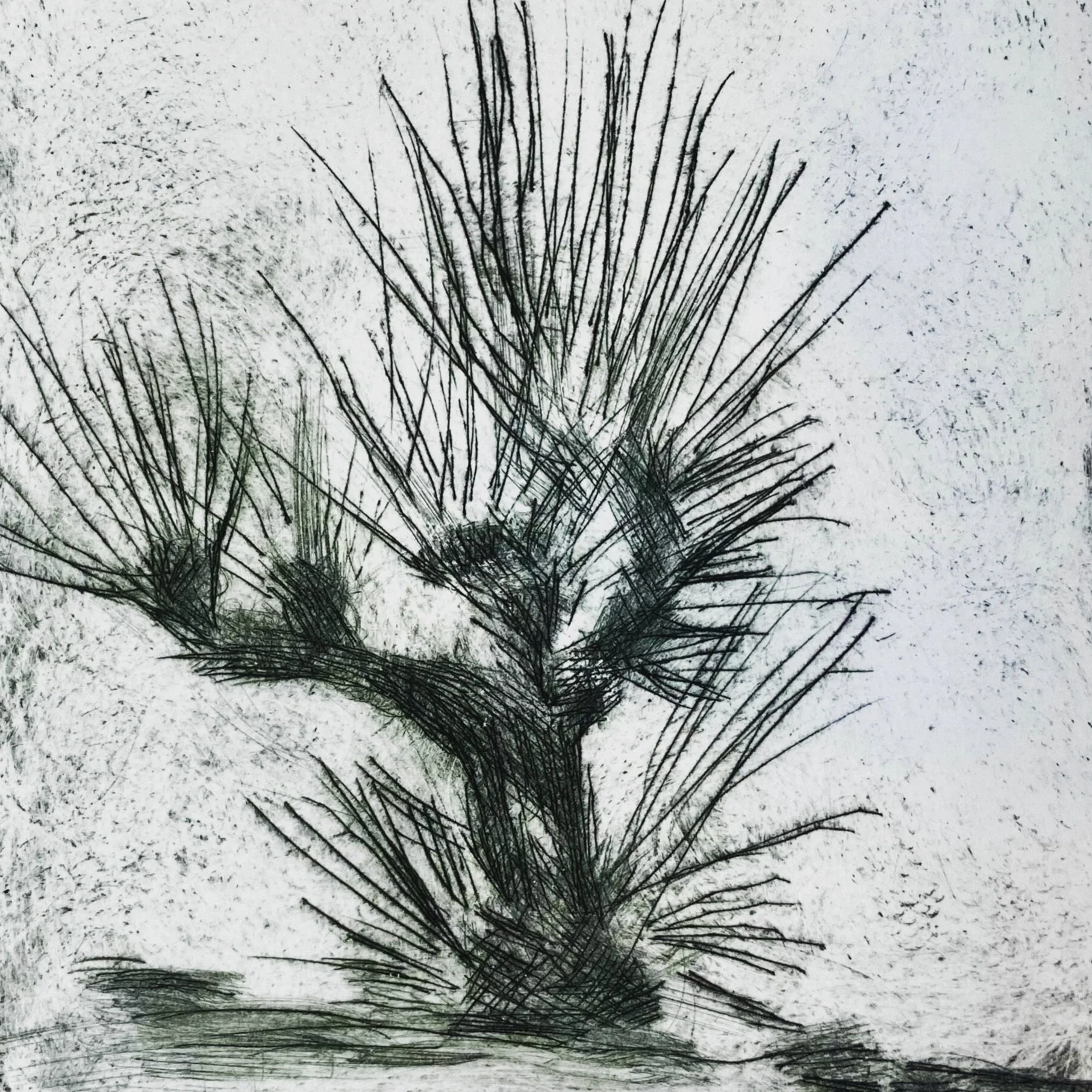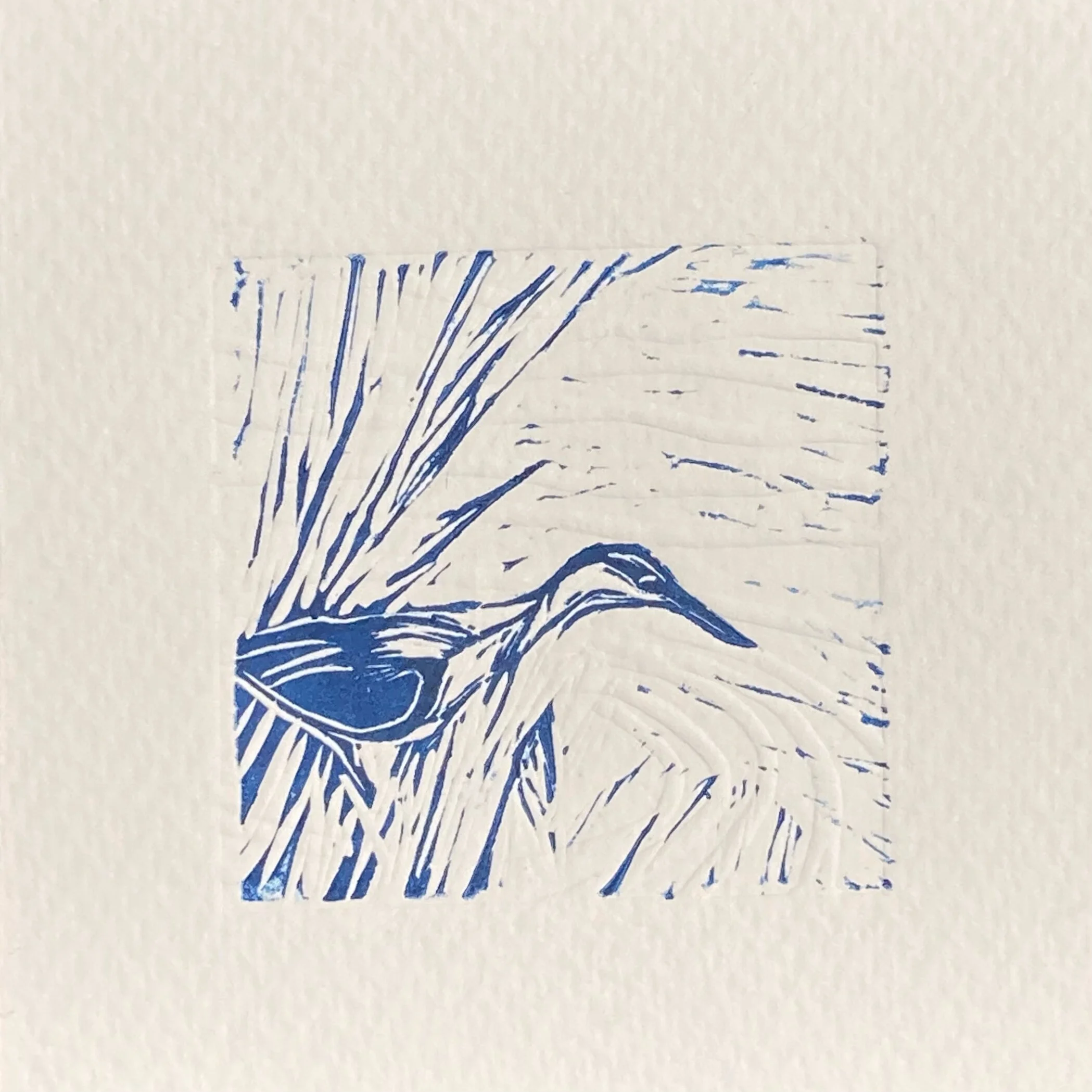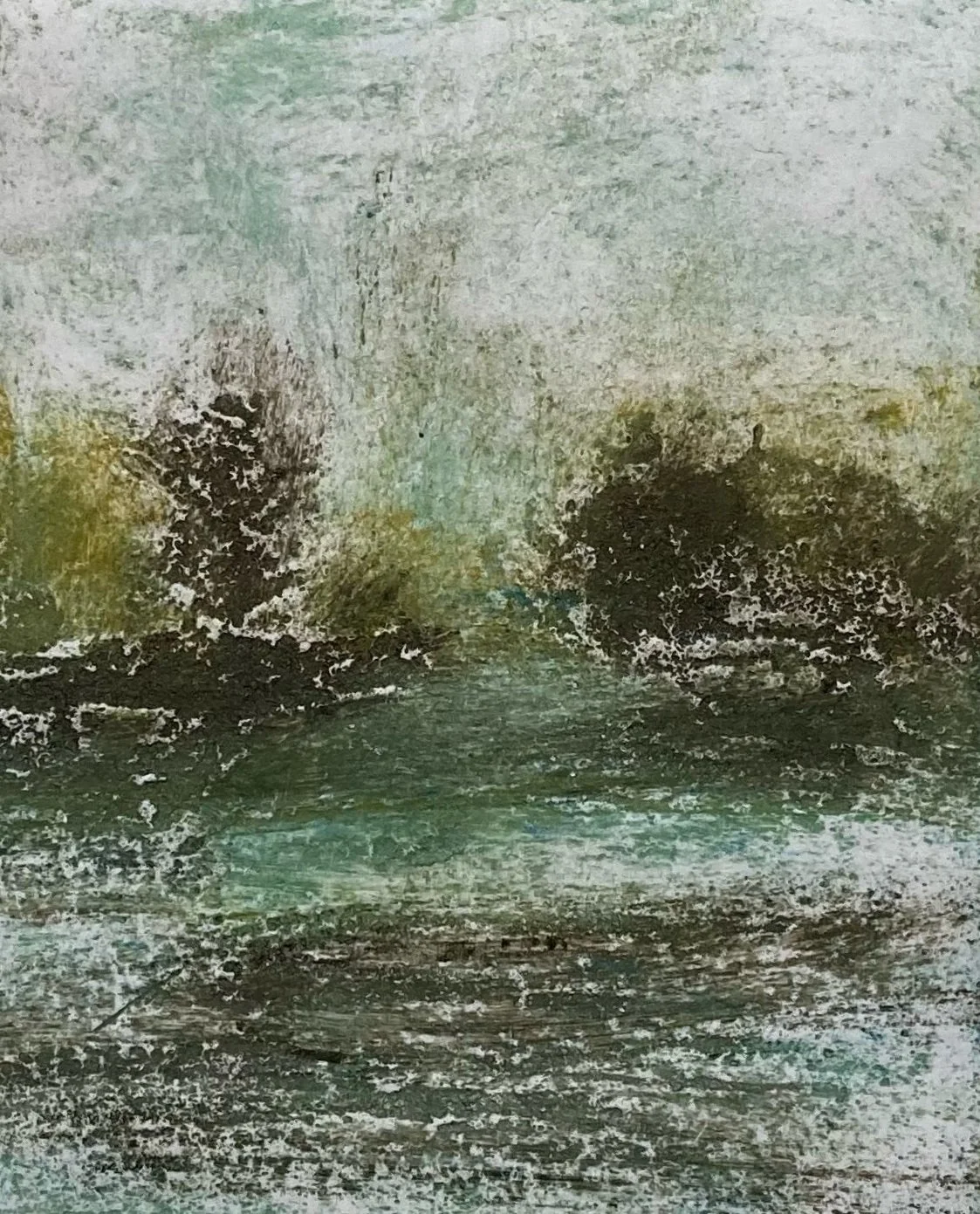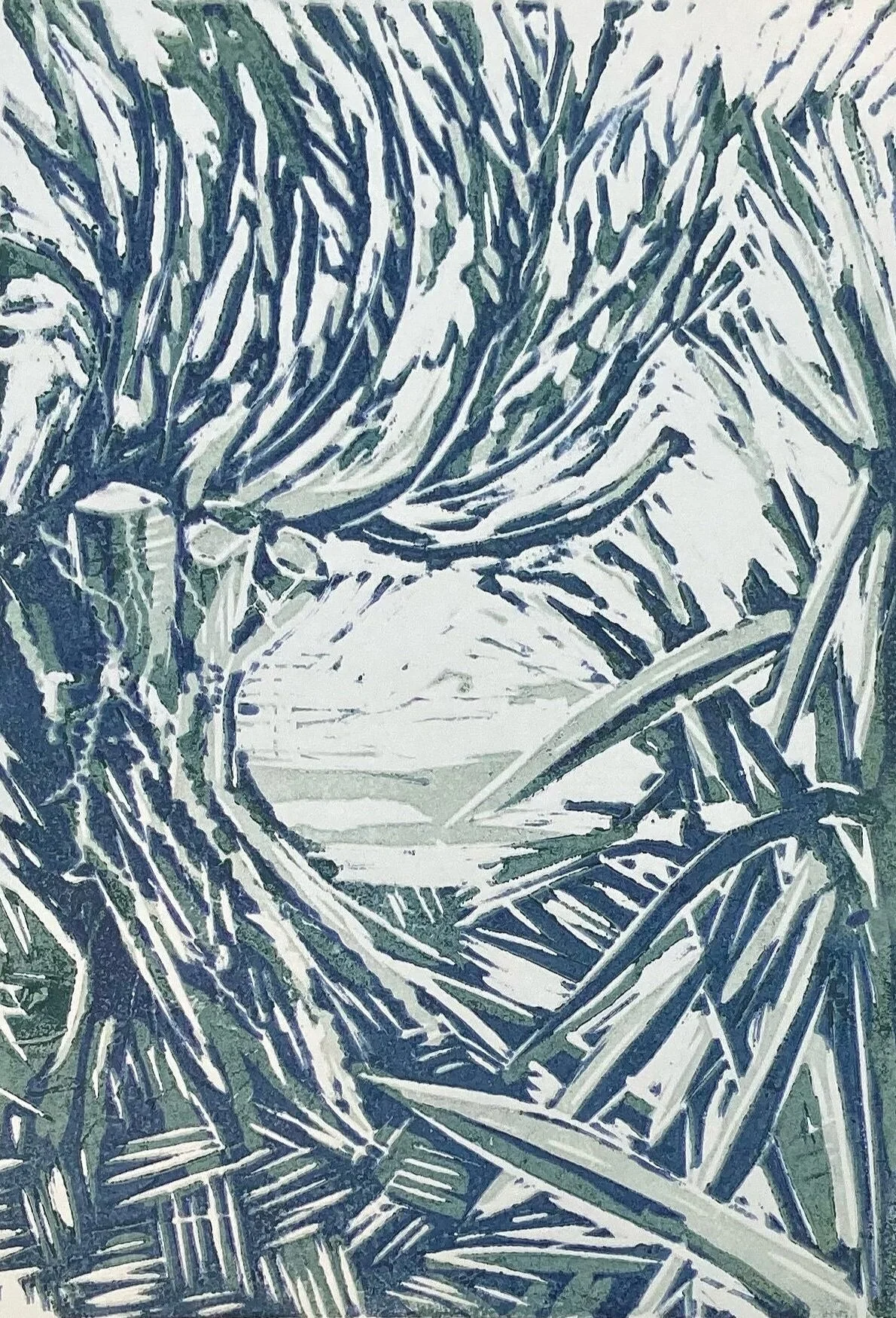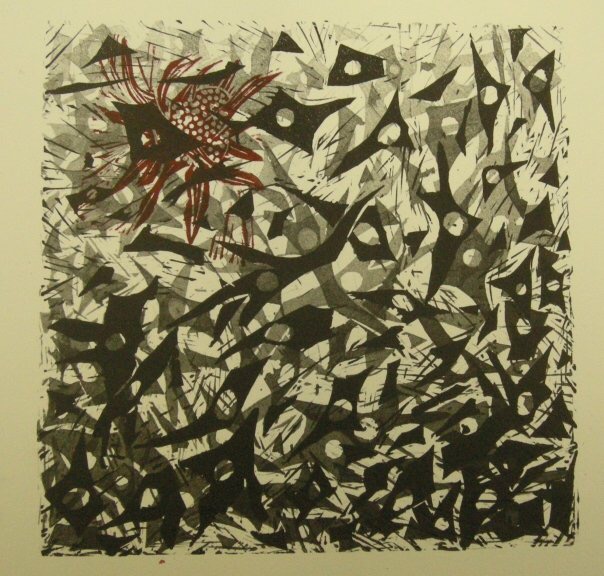CONTEMPORARY & Traditional PRINTS
I absolutely love printmaking! Inspired by both my chilly river swims in the Great Ouse and what I see down a microscope. Small editions or individual prints are my thing so you get an individual work of art made by the artist. I am indebted to CRC for the use of their well equipped print room during their very excellent leisure courses in printmaking. Note that with all of these three techniques you have to reverse the image to make the plate if it matters which way you look at the image! ( have got this wrong so many times!)
Lino printing, also known as linocut, is a printmaking technique that involves carving a design into a sheet of linoleum, usually with sharp tools. The carved lino is then inked and pressed onto paper or fabric to create a print. It’s really versatile and accessible - you can do it without a printing press using a wooden spoon! It’s a very satisfying to do as each print is unique.
Drypoint etching is a printmaking technique that involves scratching an image onto a plate, typically made of metal or I use Perspex. You draw with a sharp needle to create lines and textures directly onto the plate's surface. The resulting image is then inked and pressed onto paper, producing a unique print. The ink is forced into the fine lines drawn on the plate. Unlike other etching methods, drypoint produces bold, rich lines that allows for great spontaneity and freedom, as you can easily make adjustments or add details directly onto the plate. How you wipe off the ink also matters and can create real atmosphere.
Collagraph is a printmaking technique that involves creating a printing plate by assembling materials onto a plate, such as cardboard. These materials can range from textured items like fabric, wood, or found objects, carborundum powder or even glue! The plate is then inked and pressed onto damp paper, yielding a unique print that with intricate textures and patterns of the materials used. The number of prints depends on the robustness of the plate.

